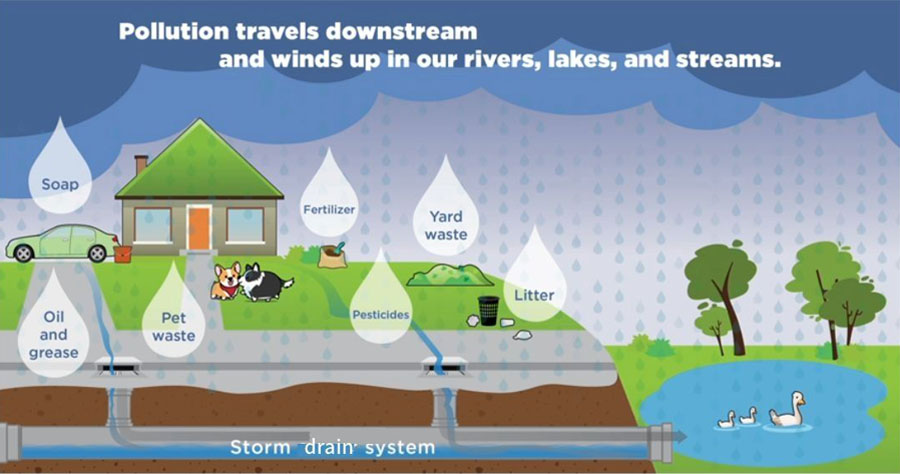Wastewater Treatment Plant Discharge Continues to Exceed E. coli Limit – Columbia Community Connection

Water Quality Assessment Report: Columbia River
Executive Summary: Aligning with Sustainable Development Goals
This report details the findings of a water quality assessment conducted on the Columbia River on August 3, 2025. The assessment was initiated to evaluate the impact of a wastewater treatment plant discharge, a critical action supporting the objectives of Sustainable Development Goal 6 (Clean Water and Sanitation) by ensuring the safety and quality of vital water resources for community and ecosystem health.
Sampling and Analysis Results
In line with the principles of SDG 6, which advocates for the protection and restoration of water-related ecosystems, a series of tests were conducted to monitor bacteriological levels in the river.
- Date of Sampling: Sunday, August 3, 2025.
- Sampling Area: Columbia River, between River Mile 180.0 and 189.5.
- Number of Samples: Five.
- Analysis Parameter: Escherichia coli (E. coli) levels.
- Finding: E. coli concentrations at all tested locations were significantly below the maximum bacterial criteria established by the Oregon Department of Environmental Quality for freshwater recreational use. This result indicates a positive status for immediate water quality concerning this specific indicator.
Public Health and Safety Measures: Upholding SDG 3 and SDG 11
To safeguard public health and well-being (SDG 3: Good Health and Well-being) and ensure access to safe and inclusive public spaces (SDG 11: Sustainable Cities and Communities), precautionary measures remain active until full compliance is verified.
- Action: Public advisory signs will be maintained at river access points as a precautionary measure.
- Condition for Removal: Signs will be removed once the wastewater treatment plant discharge fully returns to compliance standards, ensuring the long-term safety of the water for recreational use.
- Affected Locations (Oregon Shore):
- The Dalles Riverfront Park
- West Mayer Park boat launch
Conclusion and Commitment to Sustainable Water Management
The continued monitoring and public advisories demonstrate a proactive approach to water resource management. These actions are crucial for achieving the targets of SDG 6, ensuring the long-term health of the Columbia River ecosystem and the communities that depend on it. The situation will be monitored until full compliance is restored, reinforcing a commitment to sustainable environmental stewardship.
1. SDGs Addressed or Connected to the Issues Highlighted in the Article
SDG 6: Clean Water and Sanitation
- The article’s primary focus is on the quality of water in the Columbia River, which is the central theme of SDG 6. It specifically discusses a “discharge from the wastewater treatment plant” and the testing of “E. coli levels,” both of which are core components of managing clean water and sanitation.
SDG 3: Good Health and Well-being
- The article connects water quality to public health. The testing of water is done against criteria for “freshwater recreation,” and “precaution” signs are posted at “locations of public river access.” This demonstrates a concern for preventing waterborne illnesses that could result from contact with contaminated water, directly aligning with the goal of ensuring healthy lives.
2. Specific Targets Identified Based on the Article’s Content
-
SDG Target 6.3
By 2030, improve water quality by reducing pollution, eliminating dumping and minimizing release of hazardous chemicals and materials, halving the proportion of untreated wastewater and substantially increasing recycling and safe reuse globally.
- The article directly addresses this target by discussing the “discharge from the wastewater treatment plant” and its “effect on water quality.” The monitoring of “E. coli levels” is a measure of water pollution. The entire situation described revolves around managing the quality of water bodies affected by municipal discharge.
-
SDG Target 3.9
By 2030, substantially reduce the number of deaths and illnesses from hazardous chemicals and air, water and soil pollution and contamination.
- This target is relevant because the monitoring of E. coli is a public health measure to prevent illnesses from water contamination. The article mentions that signs will remain in place “as a precaution” at public access points for “freshwater recreation,” which is a direct action to protect the public from potential health risks associated with polluted water.
3. Indicators Mentioned or Implied in the Article
-
Indicator for Target 6.3
- Indicator 6.3.2: Proportion of bodies of water with good ambient water quality.
- The article provides a direct example of this indicator in action. It states that “samples were taken… to determine the effect of the discharge on water quality” and that “Tests on five samples… show that E. coli levels at the sample locations were well below the bacterial criteria set by the Oregon Department of Environmental Quality.” This process of sampling and comparing results to a quality standard is precisely how this indicator is measured.
-
Indicator for Target 3.9
- Implied Indicator: Levels of waterborne pathogens (e.g., E. coli) in recreational water bodies.
- While not an official UN indicator title, the measurement of “E. coli levels” serves as a direct proxy indicator for the risk of illness from water contamination (related to Indicator 3.9.2). The article’s focus on E. coli in the context of “freshwater recreation” and public access implies that these measurements are used to assess and mitigate health risks from water pollution.
4. Table of SDGs, Targets, and Indicators
| SDGs | Targets | Indicators |
|---|---|---|
| SDG 6: Clean Water and Sanitation | Target 6.3: By 2030, improve water quality by reducing pollution, eliminating dumping and minimizing release of hazardous chemicals and materials, halving the proportion of untreated wastewater and substantially increasing recycling and safe reuse globally. | Indicator 6.3.2 (Implied): Measuring ambient water quality by testing “E. coli levels” against “bacterial criteria set by the Oregon Department of Environmental Quality.” |
| SDG 3: Good Health and Well-being | Target 3.9: By 2030, substantially reduce the number of deaths and illnesses from hazardous chemicals and air, water and soil pollution and contamination. | Proxy Indicator for 3.9.2 (Implied): Monitoring “E. coli levels” in areas of “freshwater recreation” to prevent public illness from water contamination. Posting precautionary signs at public access points. |
Source: columbiacommunityconnection.com

What is Your Reaction?
 Like
0
Like
0
 Dislike
0
Dislike
0
 Love
0
Love
0
 Funny
0
Funny
0
 Angry
0
Angry
0
 Sad
0
Sad
0
 Wow
0
Wow
0















































































